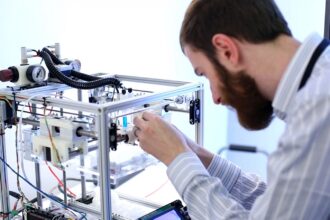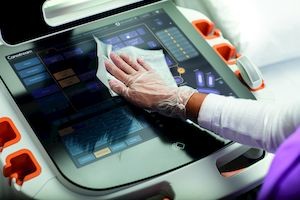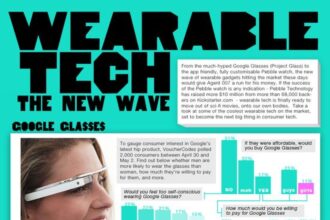 Today’s summary of studies and presentations from RSNA 2015 highlight breast density notification laws, head CT and MRI, MRI technique for osteoarthritis in college football players, organ dose management, and how CT and 3D printing helping in a surgery to separate conjoined girls.
Today’s summary of studies and presentations from RSNA 2015 highlight breast density notification laws, head CT and MRI, MRI technique for osteoarthritis in college football players, organ dose management, and how CT and 3D printing helping in a surgery to separate conjoined girls.
 Today’s summary of studies and presentations from RSNA 2015 highlight breast density notification laws, head CT and MRI, MRI technique for osteoarthritis in college football players, organ dose management, and how CT and 3D printing helping in a surgery to separate conjoined girls.
Today’s summary of studies and presentations from RSNA 2015 highlight breast density notification laws, head CT and MRI, MRI technique for osteoarthritis in college football players, organ dose management, and how CT and 3D printing helping in a surgery to separate conjoined girls.
Breast Density Notification Laws Don’t Affect Reporting Over Long-Term – RSNA Daily Bulletin
According to research presented by Manisha Bahl, M.D., M.P.H, a breast imaging fellow at Duke University Medical Center, breast density notification laws have had an immediate but not long-term impact on the reporting of dense breasts on mammography. Dr. Bahl said two possible explanations could account for the study results. Radiologists may have wished to simply avoid the new requirements for reporting, or they downgraded assessments out of fear that facilities would be overwhelmed by an increase in women seeking supplemental screening.
Studies Investigate Significance of Follow-up Head CT, MRI – RSNA Daily Bulletin
A research team at University of California, San Francisco (UCSF) Medical Center sought to evaluate the common practice of ordering CTs at six-hour intervals for mild traumatic brain injury patients with small, deep brain hemorrhages that can’t be decompressed surgically. Only three out of 90 patients studied had any increase in bleeding evident on follow-up CT, and all three had impaired clotting ability, due to either medications or underlying blood conditions. For the other patients, the hemorrhages either were stable or decreased in size on a follow-up scan.
MRI Technique Shows Link to Osteoarthritis in College Football Players – RSNA Daily Bulletin
Wenbo Wei, Ph.D., of Ohio State University presented on how using delayed Gadolinium-enhanced MRI of Cartilage (dGEMRIC) on knee cartilage shows that playing collegiate football for a longer period of time may lead to microstructural damage that is an indicator of osteoarthritis (OA). The findings of the study demonstrate that dGEMRIC is capable of assessing glycosaminoglycan (GAG) loss within each individual articular cartilage region as well as the gradual changes related to the cumulative years of playing collegiate football, said presenter Wenbo Wei, Ph.D., of Ohio State University.
CT, 3D Printing Help Team Separate Conjoined Girls – AuntMinnie
In a 26-hour operation, a multidisciplinary team used CT scans and a 3D-printed model of the organs of conjoined twins to help perform a successful separation. The presentation was given by Dr. Rajesh Krishnamurthy, chief of radiology research and cardiac imaging at Texas Children’s Hospital. The children, Knatalye and Adeline Mata of Lubbock, TX, were born on April 11, 2014. The surgery was attempted 10 months later. To prepare for the separation surgery, Krishnamurthy and colleagues performed volumetric CT imaging with a 320-detector-row scanner, administering intravenous contrast separately to each twin to enhance views of vital structures and plan how to separate the girls.
NCI Software Automates Organ Dose Measurement – AuntMinnie
Researchers from the National Cancer Institute (NCI) are finalizing a longstanding project to build a user-friendly software program that converts CT dose index volume (CTDIvol) scanner readouts into accurate organ dose estimates. The just-published National Cancer Institute CT (NCICT) project shows the calculation for converting normalized CTDIvol to organ doses for six patient ages and both genders recently approved by the International Commission on Radiation Protection (ICRP), with software to be released early next year.
The post RSNA 2015: Important Presentations and Studies from Day 4 appeared first on Everything Rad.








